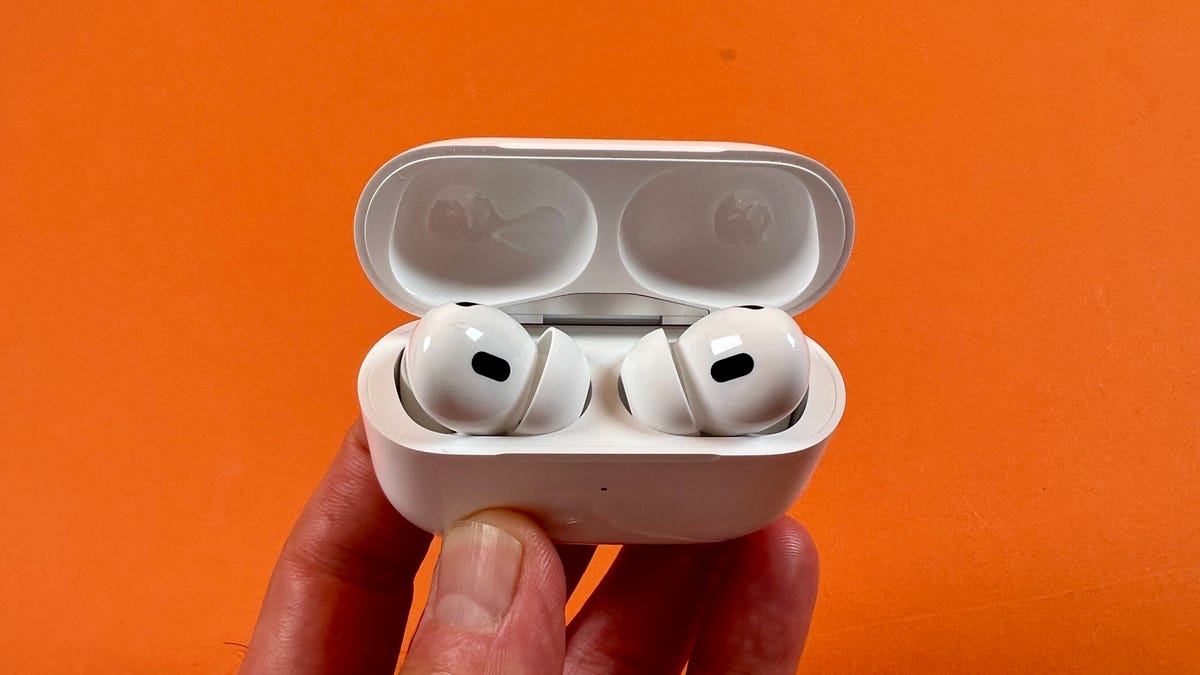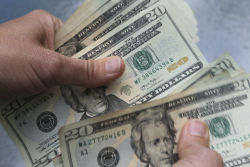New technology that enhances and personalizes our experience of listening to music and audio has brought new concerns for noise-induced hearing damage. But in the case of Apple’s AirPods, at least, it also brings new ways to improve hearing.
AirPod Pros include features and settings that may make it easier for people to listen in on the world around them when they have trouble hearing in noisy environments. Rumors shared by Bloomberg’s Mark Gurman suggest that the tech company may soon make a more formal move into the hearing health world, potentially aligning itself with over-the-counter hearing aids that became available in the US in late 2022 for people with mild or moderate hearing loss.
Apple hasn’t claimed so far that its AirPods are a hearing aid, sound amplification product or medical device which would require specific clearance from the US Food and Drug Administration, though we may find out whether that will change this Monday at the Worldwide Developers Conference. Apple is expected to make a plethora of announcements about its products, use of AI and iOS 18 updates at the conference.
The OTC market has given more people access to hearing aids: Previously you needed a prescription for all hearing aids, and now you can buy OTC hearing aids at places like Walmart and Best Buy. Despite this, though, many people whose health could be improved by a hearing aid are still not getting them. According to Tricia Ashby-Scabis, senior director of audiology practices at the American Speech-Language-Hearing Association, many people who did buy a pair of OTC hearing aids have returned them.
“I do think there’s a big component of expectations,” Ashby-Scabis said of the less-than-ideal uptake of hearing aids. “You can walk into your local pharmacy and try on readers and find the ones that are clearer,” she explained, but the same isn’t necessarily true for hearing aids, which require some tweaking and trial-and-error adjustment.
People not only need to adjust to a new device, but their brain also needs to adjust to the fresh auditory experience they’d been going without, Ashby-Scabis explained. While AirPods can’t take away any auditory experience adjustments people will need to make, they may make mild improvements in hearing even easier to access for people who’ve been toggling and toying with Apple devices and settings for years.
This idea is “why I kind of love the idea of AirPods,” Ashby-Scabis said. “People can play with them”
Read more: Apple Announces Preliminary Insights From Its Hearing Study.
AirPod features that can help people hear better
Ashby-Scabis owns a pair of AirPods, has heard their hearing enhancements discussed in conferences and has toyed with some of the features. She’s been impressed, including with the Live Listen feature that lets you use your iPhone or iPad as a directional microphone to pick up specific sounds in noisy environments, giving a more intentional element to hearing. (This works with AirPods but also some Beats devices.) Conversation Boost for AirPod Pro is another feature that helps you focus on the person in front of you who’s talking. Trouble hearing people talking in noisy environments is often one of the first signs of mild or moderate hearing loss.
“That’s something that we encourage all the time with more traditional prescription hearing aids,” Ashby-Scabis said. “We still try to get people to use accessories that can zoom in on certain people in some settings.”
To get hearing assistance features on your AirPods, you’ll need to go into Transparency Mode, which somewhat resembles a hearing aid because it fine tunes the sounds of your environment to your specific hearing. You’ll need a pair of AirPod Pros for this.
You can toggle with Transparency Mode by going to Settings in your iPhone or iPad. Then select Accessibility > Audio & Visual then select Headphone Accommodations. From there, you can select Custom Audio Setup and even upload results from an audiogram or hearing test so it’s most personalized. Once Transparency Mode is on you can further adjust it under Headphone Accommodations and turn on Conversation Boost or play with the Amplification setting.
Even making small changes like toying with brightness or making things sound crisper can help some people who may’ve begun to lose a bit of hearing.
“I think that brightness boost can really make a difference for those folks who are starting to lose some high frequency,” Ashby-Scabis said. “And it helps them pull in those consonants gives them a little more clarity to speech.”
Read more: 10 Tips to Lower Your Risk of Hearing Loss
How AirPods compare to hearing aids
Some research so far suggests that AirPods Pro do just as well as a basic hearing aid, even if they’re still beat out by more premium models. There’s a wide range of hearing aids, ranging from personal and unregulated sound amplification products, which are meant for situations where you’d like louder sounds, to OTC hearing aids for mild or moderate hearing loss and prescription-grade hearing aids.
In order for Apple to market its products as hearing aids or devices for people with hearing loss, it would need to abide by regulations put in place by the FDA. Again, it’s unclear right now if Apple will ever adjust its features to be even more like hearing aids, or if it will change its marketing so they’re more closely in line with OTC products, which are now the terrain of other tech companies like Sony.
Even if they don’t, the newer AirPod models provide a way for people to better engage with others and their environment. For starters, the AirPods Pro 2 are currently hovering a bit above $200. And while it’s a far cry from the average $4,000 and something price tag of prescription hearing aids, a good pair of OTCs will still run you at least several hundred dollars.
Getting hearing health to be taken as seriously as other aspects of health has been a feat, according to Ashby-Scabis. But she says the public and medical community is catching on to all the ways hearing can affect our health, from cognitive effects and physical conditions that may also be connected to hearing ability.
“That doesn’t mean that the hearing loss is causing the health conditions, but untreated hearing loss does tend to lead to depression, social isolation,” Ashby-Scabis said. “You start to see people withdraw, they become more sedentary — it can have such an impact on a person’s general health.”



